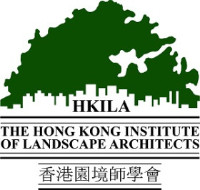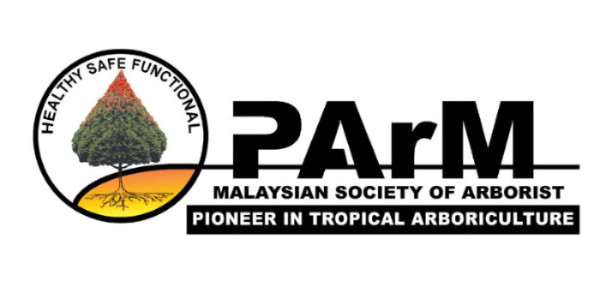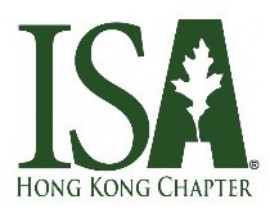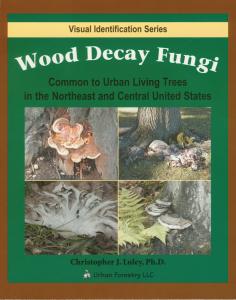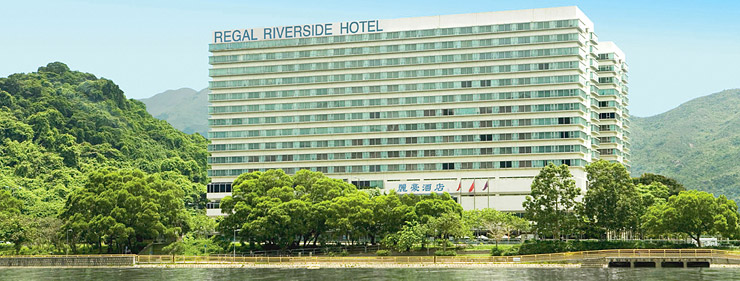the 9th annual

International Arboriculture Summit – Hong Kong
Consulting CODIT: Guidance from tree forensics experts
16-19 November 2016
Location: Suen Douh Camp, Fanling N.T
Supporting Organisations
The Week’s Schedule
This year we present four full days of international educators; lectures & workshops
- 16 – 17 November 9th Annual International Arboriculture Summit-Hong Kong
- Topic: Consulting CODIT; Guidance from tree-forensic experts
- Duration: 2 Full Days
- Educators: Various (see programme below)
- Location: Suen Douh Camp, Fanling
- 18 – 19 November 9th Annual IAS-HK Workshops (Limited Seats, first come first served)
- WORKSHOP A: CODIT & Tree Inspection (guidelines of evaluation of hazard trees in urban areas – 20 years’ experience in Germany)
- WORKSHOP B: Decay Forensics & Assessment: Does biology trump biomechanic’s?
- Duration: Each workshop is 1 Full Day, repeated on both 18 & 19 November
- Educators:
- Workshop A-Dirk Dujesiefken;
- Workshop B-Christopher Luley
- Materials; Books related to each workshop are available at a discount for registered attendees however limited to a first come first serve basis
- Location: Suen Douh Camp, Fanling
Registration Forms
International Arboriculture Summit Registration Form 16-19 Nov (PDF file)
IAS-HK Summit Schedule
16 November Wednesday 9:00-6:00
Wound Reactions in Trees & Palms – The CODIT Principle
Keynote: Dirk Dujesiefken
Forensics in Tree Investigation Part 1
Russ Carlson
Root Rot, Really?
Christopher Luley
Tree Stability, Dynamics & Pulling Forensics
Bodo & Tobias Siegert
Writing Effective Reports; A guide for consulting arborists
Jim Flott
Large Tree Relocation – an alternative method to preserve mature tree canopy
Lisa Hammer
Roadside Tree Protection
Katharina Brückmann
Opening for Local Asia Specialist Presentation
TBA
PANEL DISCUSSION
17 November Thursday 9:00-6:00
Proper Pruning of Urban Trees-The Hamburg Tree Pruning System
Keynote: Dirk Dujesiefken
Forensics in Tree Investigation Part 2
Russ Carlson
ABC’s of Young & Small Tree Pruning
Christopher Luley
Jim Flott
Opening for Local Asia Specialist Presentation
TBA
Tree Pulling Test & Measurements
Bodo & Tobias Siegert
PANEL DISCUSSION
TAC
18 November Friday 2 Full-Day WORKSHOPS (simultaneous) 9:00-5:00
WORKSHOP A
CODIT & Tree Inspection (guidelines of evaluation of hazard trees in urban areas – 20 years’ experience in Germany)
Keynote: Dirk Dujesiefken
WORKSHOP B
Decay Forensics and Assessment: Does Biology Trump Biomechanic’s?
Christopher Luley
PANEL DISCUSSION
TBD
19 November Saturday 2 Full-Day WORKSHOPS (repeated simultaneous) 9:00-5:00
WORKSHOP B
Decay Forensics and Assessment: Does Biology Trump Biomechanic’s?
Christopher Luley
WORKSHOP A
CODIT & Tree Inspection (guidelines of evaluation of hazard trees in urban areas – 20 years’ experience in Germany)
Keynote: Dirk Dujesiefken
PANEL DISCUSSION
TBD
Summit Educators
Keynote Speaker
Professor Dirk Dujesiefken (Germany)
A research fellow for the Chair for Wood Biology from 1980 to 1991 and has been head of the Institute of Arboriculture in Hamburg, Germany, since 1991. He teaches at the University of Applied Science (HAWK) in Göttingen, Germany, at the Swedish University of Agricultural Science (SLU) in Alnarp, Sweden, and at the University of Natural Resources and Life Science (BOKU) in Vienna, Austria.

joined Urban Forestry LLC in the fall of 2004. He also was State Forest Pathologist for Missouri and managed the Plant Diagnostic Clinic for Iowa State University. His graduate degrees are in forest pathology from SUNY College of Environmental Science and Forestry at Syracuse and Iowa State University. He specializes in urban forest and pest management, and diagnosis of wood decay in urban trees. Dr. Luley has over 50 technical publications on urban tree topics and three books in publication. He recently received the R. W. Harris Author’s Award from the International Society of Arboriculture.

has worked in the field of arboriculture for nearly 40 years as a commercial arborist and an independent consulting arborist. Throughout his career, Russ has taken a multidisciplinary approach to arboriculture, with a broad knowledge of trees, the environment, and the associations of trees and people. Projects include tree risk assessment and diagnosis, tree trespass, tree appraisal, personal injury and fatality cases involving trees and related issues, forensic investigations and reconstruction, tree and landscape inventories, insect and disease diagnostics, environmental analysis and mitigation, construction design and planning for trees and remediation for damaged trees, and preparation of project specifications for tree preservation and management.
Since 1983, Russ has been a Certified Arborist with the Pennsylvania-Delaware Chapter of ISA, and with the International Society of Arboriculture (ISA) when the program became international in 1993. In 2004, he qualified as an ISA Board Certified Master Arborist. He has been a member and Registered Consulting Arborist of the American Society of Consulting Arborists since 1994. He taught as an instructor and coach at the ASCA Consulting Academy for 14 years. In 2010, he became a Certified Tree Risk Assessor, and in 2013 achieved the ISA Tree Risk Assessment Qualification when the program was initiated, and re qualified in March 2015.
Russ has extensive experience in the field of forensic arboriculture, working on legal cases since the beginning of his career. He developed and taught the Forensics in Arboriculture curriculum at the ASCA Academy for 6 years, has written articles about some aspects of the topic, and has coached many other arborists on issues dealing with the court and legal systems.

a native Miamian who was raised in the neighborhood now known as Pinecrest. Her family moved to Miami in the 1950’s to work in the airline industry, but as nature-lovers, they regularly camped and explored all of Florida’s wilderness areas. She attended Palmetto High School, then the University of Florida, where she graduated in 1981 with a B.S. degree in Agriculture. She majored in Fruit Crops, and earned a Certificate of Specialization in Tropical Agriculture. View resume.
Her youthful goal was to work in developing tropical countries promoting sustainable agriculture. She enrolled in the Master’s program in Tropical Agriculture at the University of Hawaii, and worked in the Honolulu Zoo aviary caring for the plants in the bird cages. A year later she returned to Florida in need of “a real job” and accepted a position as an Urban Horticulture Extension Agent at the University of Florida Cooperative Extension Service in
It was during that time that Lisa developed an interest in landscaping and arboriculture and realized that she could still work with tropical plants and encourage sustainability by “thinking globally, acting locally”. Seeing a niche, she struck out on her own in February, 1987, and began her consulting practice. It quickly grew from a simple residential consultation to a highly successful consulting practice, encompassing a wide array of professional services
International Society of Arboriculture American Society of Consulting Arborists In 1992 she joined the International Society of Arboriculture and became a Certified Arborist (#SO-0758). That same year she was accepted into the American Society of Consulting Arborists and became a Registered Consulting Arborist (RCA #333). This elite status is only conferred upon those who meet rigorous standards and to date, she remains the only RCA in Miami-Dade County.
Lisa now lives in Coconut Grove with her husband, Brian Duplisea, and her consulting practice continues to thrive. She and Brian enjoy boating on Biscayne Bay and are members of The Coconut Grove Sailing Club. They travel often to the tropics and to visit Brian’s family in Maine.

is president of Community Forestry Consultants, Inc. (CFC). CFC provides TreeWorks™ tree management software; inventories and appraisals; management plans; risk assessment and risk management plans; tree preservation plans; diagnosis; expert witness; forensic investigations; urban forestry program reviews; training workshops; and urban forestry, arboriculture, and horticulture consulting services to individuals, corporations, universities, municipalities, county and state agencies, cemeteries, and golf courses in the United States and Canada. He received his B.S. degree in horticulture from Iowa State University and his M.S. degree in forest pathology from the University of Arizona and has over 40 years work experience in the horticulture, urban forestry and arboriculture industries.
He is a former President of the Pacific Northwest International Society of Arboriculture (PNW-ISA) chapter and the Washington Community Forestry Council; an ISA certified arborist and certified municipal specialist; American Society of Consulting Arborists registered consulting arborist; PNW-ISA TRACE instructor and certified tree risk assessor; ISA TRAQ instructor and assessor; current member of the ISA board of directors. His consulting practice specializes in municipal arboriculture and urban forestry programs.
is a court-certified expert in tree care and tree statics in Nuremberg, Germany (www.sv-siegert.de). Head of the German association for arboriculture, work at height and ecology (BAHÖ e.V.), Bodo is involved in various national and international committees to develop urban tree care rules and regulations ensuring corresponding quality assurance. Focused on the continuous improvement of tree security examination, he established the Independent Tree Expert Group (ITEG), a network of international tree care experts pursuing an integrated tree assessment approach. He teaches at the Nuremberg School of Arborist Training for tree inspectors and experts in tree care and tree statics.
is the COO of the Freetree, supplier and equipment manufacturer for tree care, tree examination and work at heights products in Germany. Beneath his studies of mechanical engineering at the University of Erlangen, he developed TSE Tree Stability Evaluation, a software application that calculates pulling test sensor data for tree stability and security evaluation. Together with Bodo Siegert, Tobias is heading the Independent Tree Expert Group (ITEG). He teaches tree care experts for integrated tree statics examination, with special focus on pulling tests.
finished her study at the University of Rostock in 1986 with a degree in agriculture. She became the head of one department for livestock farming in a state-owned agricultural farm. After a training in business administration, marketing, law and English followed by residency in England she worked as a speaker for Friends of the Earth Germany (BUND), national association Mecklenburg-Vorpommern, and since 2003 as the leader of the BUND-Project “Tree and Avenue protection”. During this time she qualified as a FLL-certified tree inspector and took part in training for tree maintenance at Justus-von-Liebig-School Hannover.

there are still openings for our local experts here to be an educator at the 9th annual summit…. see the Call for Presentations Below.
Registration Forms
International Arboriculture Summit Registration Form Nov 16-19 (PDF file)
Supporting Organizations of the 9th IAS-HK Summit
2016 IAS-HK Summit Sponsorship Opportunities
We are seeking support for the 9th annual IASHK conference this November. Please review the various options.
Click here to download the full details of sponsorship options
Option 1: Name Tag Lanyards (HK$6900)
In recognition of your generous contribution, we offer you:
- 2cm width lanyard with company name in color printing
- Announcement in letter (multiple times after signing sponsor agreement)
- Name on poster/banner in summit meeting room
- Notice in hardcopy and softcopy of printing materials
- Plus 1 FREE registration
Option 2: Pen-USB with presentations saved (HK$9900)
- In recognition of your generous contribution, we offer you:
- Pen-USB drive, company name printed; Comp. information saved inside
- Announcement in letter (multiple times after signing sponsor agreement)
- Name on poster/banner in summit meeting room
- Notice in hardcopy and softcopy of printing materials
- NEW: Display table for your presentation of organization or individual
- Plus 1 FREE registration
Option 3: Recycle CANVAS Bag
Platinum Sponsor (HK$7500)
In recognition of your generous contribution, we offer you:
- Sponsor company name/logo print on the front-top of bag (8cm font)
- Announcement in letter (multiple times based on signing sponsor agreement)
- Name on poster/banner in summit meeting room
- Notice in hardcopy and softcopy of printing materials
- Plus 1 FREE registration
Gold Sponsor (HK$6000)
In recognition of your generous contribution, we offer you:
- Sponsor company name/logo print second-middle position of bag (6cm font)
- Announcement in letter (multiple times after signing sponsor agreement)
- Notice in hardcopy and softcopy of printing materials
Bronze Sponsor (HK$5500)
In recognition of your generous contribution, we offer you:
- Sponsor company name/logo print on third position at the bag (4cm font)
- Announcement in letter (multiple times after signing sponsor agreement)
- Notice in hardcopy and softcopy of printing material
Exclusive Sponsor (HK$13,900)
In recognition of your generous contribution, we offer you:
- Sponsor company name/logo print on the bag (9cm font alone)
- Announcement in letter (multiple times after signing sponsor agreement)
- Name on poster/banner in summit meeting room
- Notice in hardcopy and softcopy of printing materials
- Plus 2 FREE registrations
Option 4: Printed book of educator’s presentations
(the printing will only be done if 2 or more sponsor)
Platinum Sponsor (HK$8000)
in recognition of your generous contribution, we offer you:
- Sponsor company name/logo print on front cover upper-prominently located (also inside several places)
- Announcement in letter (multiple times after signing sponsor agreement)
- Name on poster/banner in summit meeting room
- Notice in hardcopy and softcopy of materials
- Plus 1 FREE registration
Gold Sponsor (HK$7000)
In recognition of your generous contribution, we offer you:
- Sponsor company name/logo print on front cover middle-located (also inside several places)
- Announcement in letter (multiple times after signing sponsor agreement)
- Notice in hardcopy and softcopy of materials
Bronze Sponsor (HK$5500)
In recognition of your generous contribution, we offer you:
- Sponsor company name/logo print on front cover lower-located (also inside several places)
- Announcement in letter (multiple times after signing sponsor agreement)
- Notice in hardcopy and softcopy of materials
Exclusive Sponsor (HK$13,900)
in recognition of your generous contribution, we offer you:
- Sponsor company name/logo print on front cover with opening pages of each major (also inside several places)
- Announcement in letter (multiple times after signing sponsor agreement)
- Name on poster/banner in summit meeting room
- Notice in hardcopy and softcopy of materials
- Plus 2 FREE registrations
Option 5: Tea break refreshment (four daily opportunities for exposure)
Morning session tea per day (HK$1200)
In recognition of your generous contribution, we offer you:
- Company name on poster/special pamphlets at strategic locations
Afternoon session tea per day (HK$1200)
In recognition of your generous contribution, we offer you:
- Company name on poster/special pamphlets at strategic locations
Whole day two tea breaks ($2000)
In recognition of your generous contribution, we offer you:
- Company name on poster/special pamphlets at strategic locations
Option 6: Lunch per day (HK$5900)
In recognition of your generous contribution, we offer you:
- Announcement in letter (multiple times after signing sponsor agreement)
- Name on poster/special deserts provided and name placards on table
- Name on poster/banner in summit meeting room
- Plus 1 FREE registration
Option 7: Prizes Drawing
Morning/Afternoon session each day (HK$1500)
In recognition of your generous contribution, we offer you:
- Company name on poster/special pamphlets at strategic locations
- Company or individual representation for prize book or arborist tool
- Recognition in printed materials handed out to attendees
NEW BREAK Option; Present product or service for 2 breaks X 2 minutes (HK$3000 per day, 4 days available 16-19 November)
In recognition of your generous contribution, we offer you:
- Announcement in letter (multiple times after signing sponsor agreement)
- You personally introduce product/service for 2 minutes, start of breaks
- your printed materials handed to attendees
- Display table for day of your presentation of organization or individual
Click here to download the full details of sponsorship options
Summit Hotel
For this year’s conference, those of you who are planning to attend from outside of Hong Kong, you can consider the Regal Riverside Hotel as an option for lodging during the conference. Please contact the hotel directly to make your reservations and mention that you will be attending this year’s IAS-HK conference.
The hotel is conveniently located in Shatin. Both bus and taxi options are available for travel from the hotel to the conference location.
Call for Presentations for the 9th IAS-HK Summit
The theme this year is:
“Consulting CODIT: Guidance from tree-forensics experts”
We welcome individuals in the region to submit their presentations,especially in the areas of handling trees in challenging environments within the Asian urban environments.
The time slots for speaking at the conference will be approximately 30 minutes. Airfare, full registration, and hotel stay for 3 nights will be provided for the one (1) individuals from outside of Hong Kong however within the Asian regional vicinity.
Find the open times above in the program dates listings.
Opening still available for Hong Kong/Macau or south China region also, see the opening time above in program dates listings.
Presentations will be evaluated based on overall quality, appropriateness and timeliness of topic, well-defined focus, practical application of material, and the subject’s interest to a diverse audience.
Please input “IAS-HK Presentation” in the Subject Line & submit your presentations to info@ias.hk
Thank you for your interest.
Abstracts of Presentations 16-17 November, Wednesday & Thursday
Wound reactions of trees and palms – The CODIT Principle
This presentation describes the complex changes in trees and palms after wounding. Summarily four phases of defence reactions according to the CODIT principle are presented: Phase 1: Invading air. As a reaction to the invading air, the tissue at the wound edges dies; Phase 2: Invading of microorganisms (e.g. decay) into the dead discolored tissue; Phase 3: Spread of microorganisms in the wood. Especially in older tissue the reaction zone can be breached; Phase 4 (only in trees): Encapsulation of the microorganisms. Wound closure progressing from the wound edges encapsulates the infected wood. Once the decay is enclosed the microorganisms die since needed oxygen is no longer available to microorganisms. The encapsulation of wood infected by fungi is the survival principle for trees The presentation shows the wound reactions in different tree species and palms and in different types of wounds and gives recommendations for aboricultural practice. The CODIT principles are based on results of research from different institutions in the world. The concept was published in The CODIT Principle in 2015 by ISA. Dirk Dujesiefken, Institute of Arboriculture, Hamburg, Germany
Root Rot, Really?
Root rot is a bogus diagnosis! Root rot represents at least four different possible diagnoses each with different etiologies and possible treatments. This presentation will explore these different causes of root rot in trees, their indicators, along with some of the primary causal agents and methods of remediation. Christopher Luley, Urban Forestry LLC
Forensics in Tree Investigations
Forensics is the act or art or an exercise of one’s powers of argument. It is often used in reference to legal proceedings in courts of law, but can be used in other venues as well. Forensics is the use of logic and reason, along with a well-developed process for gathering facts and evidence, with the ultimate goal of presenting the sequence of events that led to the end result. Whether the project is large or small, the process and protocols of forensic investigation can be applied to provide insight into tree investigations of all types. We will discuss how forensics and forensic investigation can be used on a broad range, and some of the concepts behind the process. ( this excellent and practically useful topic will be presented in two parts) Russ Carlson, Tree Tech Consulting
Writing Effective Reports: A guide to consulting arborists
Whether you work in the public sector or with a private business, effective communication about the trees we care for is integral to our success. The most valuable tool you have to communicate with the clients you serve is clear and effective writing. Good reports, whether management plans, tree risk assessments, tree appraisals or even bid proposals, go a long way to ensure a positive outcome for any project.
This presentation provides simple, easy-to-understand instruction to assist arborists in writing effective reports. Topics will include report-writing basics, the crucial elements of an effective report, and various report styles, from a simple on-site field reports and estimates to comprehensive booklet-style reports. Jim Flott, Community Forestry Consultants, Inc
Road Side Tree Protection – concept in northern Germany
This Presentation shows, how associations together with local activists protect and develop landscape elements such as road side tree rows called avenue. Avenues are objects of natural and cultural value, they are witness of regional history, join biotopes, are living areas for animals and in Mecklenburg-Western Pomerania they are an important factor for tourism and therefore for our economy.
After the Second World War, particularly in the western part of Germany there was a fast increase in mobility. The environmental benefit of the avenues was no longer recognized. 70% of all state roads and 30% of all federal highways have been widened. It was a monstrous campaign of destruction against the avenues. It is estimated that since 1945 50.000 km tree avenues have been destroyed in western Germany. It was different in the former GDR. Since the traffic was low and limited financial resources for road improvements and tree cutting were available, the street trees developed splendidly. At the time of reunification the former GDR brought an aesthetic landscape treasure in the new, larger Federal Republic.
Reunification brought a change in the infrastructure and that at a tremendously rapid pace. Serious damage was done to the trees especially in the root zone. These errors and a clear violation of existing regulations for building measures in the area of trees are the cause of so much tree felling today and so many gaps in tree avenues. Result: Less than 20% of the tree avenues of federal and state roads are complete!
Friends of the Earth Germany (BUND) campaigns for sustainable development of avenues, for protection of existing and development of new ones. We focus on high quality of new plantings, the abidance of the edicts, the development of local concepts and the protection along the field side. To fulfill these aims the BUND leads projects for the last 20 years. Katharina Brückmann, (BUND, Friends of the Earth Germany; Allen Schützen
Large Tree Relocation – an alternative method to preserve mature tree canopy
With increasing urban development mature tree canopy is being lost faster than it can be replaced. Large tree relocation is more commonly being performed to save heritage trees, obtain an “instant landscape”, or to comply with tree protection ordinances. However, it can be a time-consuming, costly, and risky endeavor. Based on her experience overseeing numerous large-tree relocation projects, Ms. Hammer will discuss the reasons for moving large trees, factors to consider, how trees respond, and various approaches to successful large-tree relocation projects. Lisa H. Hammer, RCA, Horticultural Consultant, Miami, Florida USA
ABC’s of Young and Small Tree Pruning
This presentation is based on author’s recently published book! Training young trees is arguably the most important tree care management treatment we have to prolong the lifespan of a tree– yet it is often ignored until it is too late to correct developing defects. This presentation will introduce a repeatable easy to learn pruning method for landscape professionals. It uses an acronym system, the ABC’s, to lead you through the pruning process in a way that eliminates defects, creates good branch structure, and is easy to recall. So, forget trying to imagine what this tree “should” look like tomorrow or ten years from now, the ABCs directs you to prune the tree based on indicators that are on the tree is front of you right now. Christopher Luley, Urban Forestry LLC
Proper pruning on urban trees – The Hamburg Tree Pruning System
Trees in urban areas are pruned for several reasons. Each pruning cut causes a wound, which leads at least in the exposed wood at the wound surface to discoloration and decay. The extension of the resulting defect depends on wound diameter, tree species, time of wounding, wound treatment, and last but not least the attachment of the branch to the stem. The effects of different pruning cuts on urban trees has been investigated in Hamburg, Germany, since 1985. The study of 750 different pruning wounds on typical urban tree species lead to the Hamburg Tree Pruning System. The system answers the following questions: How should branches with and without a branch collar be removed? How should dead branches be removed? How should branches with included bark or codominant stems be removed? What are the differences between tree species in wound response? What is the maximum wound size which will be effectively compartmentalized by the tree? Dirk Dujesiefken, Institute of Arboriculture, Hamburg, Germany
The term “Tree Doctor” implies that such a professional can effectively diagnose a plant health problem and offer advice or prescriptions for resolving it.
Although not known as tree doctors these days, arborists are often called upon by their clients for exactly this service, since diagnosing plant health problems takes specialized knowledge and experience. Some diagnoses are straight-forward when dealing with common problems; however, other plant health issues can be frustrating to diagnose in cases when symptoms are elusive or when circumstances conspire to obscure the signs that something might be wrong.
The best plant health diagnosticians out there will tell you that it takes decades of study and diligent practice to get really good at it–and even then, the most experienced will still consult textbooks and research articles to help verify their conclusions. This lecture presents diagnostic steps to follow in determining the problem. Jim Flott, Community Forestry Consultants, Inc
Tree Stability Dynamics & Forensics
Bodo Siegert, Tobias Siegert
Workshops 18-19 November, Friday & Saturday
(simultaneous & repeated each day)
CODIT & Tree Inspection, (guidelines of evaluation of hazard trees in urban areas – 20 years’ experience in Germany)
In this workshop first the experience of the evaluation of hazard trees in the last 20 years in Germany are given. Since 2004 a guideline for the tree inspection exists for the whole country. Since then other European countries started to adapt the German guidelines.
In the second part of the workshop trees and wooden pieces with defects will be dissected. Dirk Dujesiefken will explain the symptoms of the defects at the outside of the tree and in the inner bark. Most defects are related to wounds, decay and cracks. The CODIT Principle helps to understand the reactions of the tree and lead to a better tree inspection.
Decay Forensics and Assessment: Does Biology Trump Biomechanic’s?
Arborists are required to assess trees for decay as part of their daily work context, such as sales calls, climbing, or during formal tree risk assessment. TRAQ qualified arborists are required to determine tree stability when decay is present and make subsequent judgments about tree failure potential. Yet the arboricultural industry has not provided an generally accepted process for assessing trees for decay.
This workshop will present a process to assess trees for decay presence and severity and make judgments on tree stability based on field characteristic of decay indicators, tree response to wounds and decay, sounding, and knowledge of CODIT and decay progression in trees. It will ultimately address the question does tree and decay biology trump tree biomechanics?




